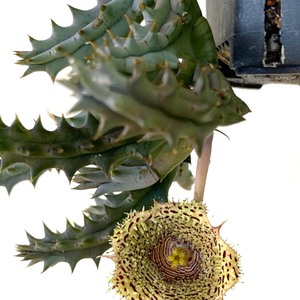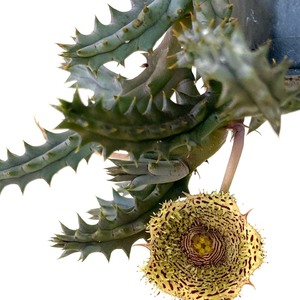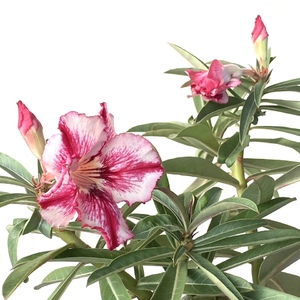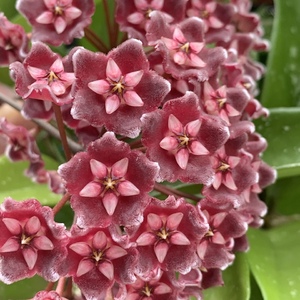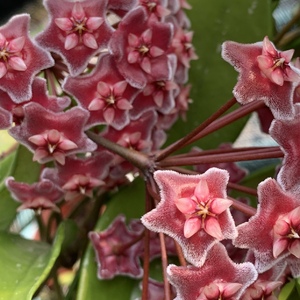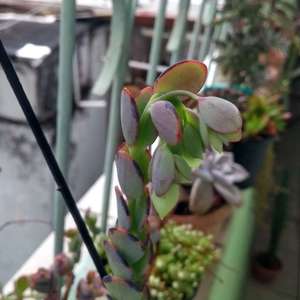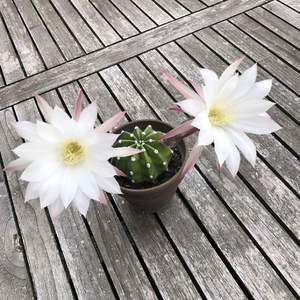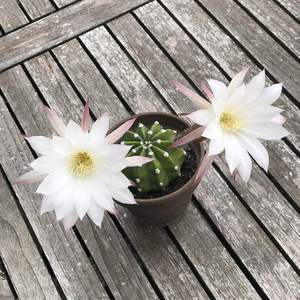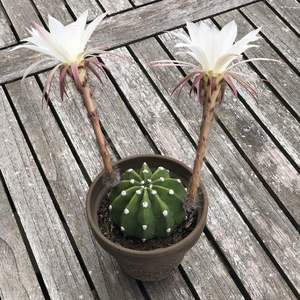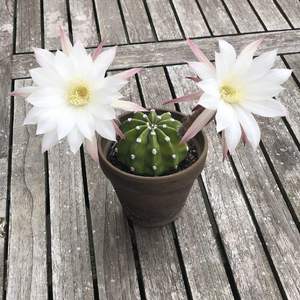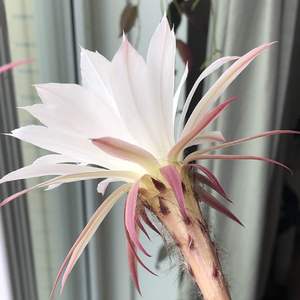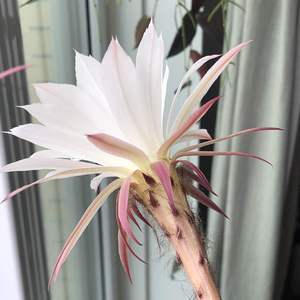文章
ritau
2020年03月26日

Lilies are genus of herbaceous flowering plants growing from bulbs, all with large prominent flowers. Lilies are a group of flowering plants which are important in culture and literature in much of the world. Most species are native to the temperate northern hemisphere, though their range extends into the northern subtropics. Many other plants have "lily" in their common name but are not related to true lilies.

Lilies are tall perennials ranging in height from 2–6 ft (60–180 cm). They form naked or tunicless scaly underground bulbs which are their organs of perennation. In some North American species the base of the bulb develops into rhizomes, on which numerous small bulbs are found. Some species develop stolons. Most bulbs are buried deep in the ground, but a few species form bulbs near the soil surface. Many species form stem-roots. With these, the bulb grows naturally at some depth in the soil, and each year the new stem puts out adventitious roots above the bulb as it emerges from the soil. These roots are in addition to the basal roots that develop at the base of the bulb.
The flowers are large, often fragrant, and come in a wide range of colors including whites, yellows, oranges, pinks, reds and purples. Markings include spots and brush strokes. The plants are late spring- or summer-flowering. Flowers are borne in racemes or umbels at the tip of the stem, with six tepals spreading or reflexed, to give flowers varying from funnel shape to a "Turk's cap". The tepals are free from each other, and bear a nectary at the base of each flower. The ovary is 'superior', borne above the point of attachment of the anthers. The fruit is a three-celled capsule.

Many species are widely grown in the garden in temperate and sub-tropical regions. They may also be grown as potted plants. Numerous ornamental hybrids have been developed. They can be used in herbaceous borders, woodland and shrub plantings, and as patio plants. Some lilies, especially Lilium longiflorum, form important cut flower crops. These may be forced for particular markets; for instance, Lilium longiflorum for the Easter trade, when it may be called the Easter lily.
Lilies are usually planted as bulbs in the dormant season. They are best planted in a south-facing (northern hemisphere), slightly sloping aspect, in sun or part shade, at a depth 2½ times the height of the bulb (except Lilium candidum which should be planted at the surface). Most prefer a porous, loamy soil, and good drainage is essential. Most species bloom in July or August (northern hemisphere). The flowering periods of certain lily species begin in late spring, while others bloom in late summer or early autumn.They have contractile roots which pull the plant down to the correct depth, therefore it is better to plant them too shallowly than too deep. A soil pH of around 6.5 is generally safe. The soil should be well-drained, and plants must be kept watered during the growing season. Some plants have strong wiry stems, but those with heavy flower heads may need staking.


Lilies are tall perennials ranging in height from 2–6 ft (60–180 cm). They form naked or tunicless scaly underground bulbs which are their organs of perennation. In some North American species the base of the bulb develops into rhizomes, on which numerous small bulbs are found. Some species develop stolons. Most bulbs are buried deep in the ground, but a few species form bulbs near the soil surface. Many species form stem-roots. With these, the bulb grows naturally at some depth in the soil, and each year the new stem puts out adventitious roots above the bulb as it emerges from the soil. These roots are in addition to the basal roots that develop at the base of the bulb.
The flowers are large, often fragrant, and come in a wide range of colors including whites, yellows, oranges, pinks, reds and purples. Markings include spots and brush strokes. The plants are late spring- or summer-flowering. Flowers are borne in racemes or umbels at the tip of the stem, with six tepals spreading or reflexed, to give flowers varying from funnel shape to a "Turk's cap". The tepals are free from each other, and bear a nectary at the base of each flower. The ovary is 'superior', borne above the point of attachment of the anthers. The fruit is a three-celled capsule.

Many species are widely grown in the garden in temperate and sub-tropical regions. They may also be grown as potted plants. Numerous ornamental hybrids have been developed. They can be used in herbaceous borders, woodland and shrub plantings, and as patio plants. Some lilies, especially Lilium longiflorum, form important cut flower crops. These may be forced for particular markets; for instance, Lilium longiflorum for the Easter trade, when it may be called the Easter lily.
Lilies are usually planted as bulbs in the dormant season. They are best planted in a south-facing (northern hemisphere), slightly sloping aspect, in sun or part shade, at a depth 2½ times the height of the bulb (except Lilium candidum which should be planted at the surface). Most prefer a porous, loamy soil, and good drainage is essential. Most species bloom in July or August (northern hemisphere). The flowering periods of certain lily species begin in late spring, while others bloom in late summer or early autumn.They have contractile roots which pull the plant down to the correct depth, therefore it is better to plant them too shallowly than too deep. A soil pH of around 6.5 is generally safe. The soil should be well-drained, and plants must be kept watered during the growing season. Some plants have strong wiry stems, but those with heavy flower heads may need staking.

0
0
文章
ritau
2020年03月18日

Tulips (Tulipa) form a genus of spring-blooming perennial herbaceous bulbiferous geophytes (having bulbs as storage organs). The flowers are usually large, showy and brightly colored, generally red, pink, yellow, or white (usually in warm colors). They often have a different colored blotch at the base of the tepals (petals and sepals, collectively), internally. Because of a degree of variability within the populations, and a long history of cultivation, classification has been complex and controversial. The tulip is a member of the lily family, Liliaceae, along with 14 other genera, where it is most closely related to Amana, Erythronium and Gagea in the tribe Lilieae. There are about 75 species, and these are divided among four subgenera. The name "tulip" is thought to be derived from a Persian word for turban, which it may have been thought to resemble. Tulips originally were found in a band stretching from Southern Europe to Central Asia, but since the seventeenth century have become widely naturalised and cultivated (see map). In their natural state they are adapted to steppes and mountainous areas with temperate climates. Flowering in the spring, they become dormant in the summer once the flowers and leaves die back, emerging above ground as a shoot from the underground bulb in early spring.

While tulips had probably been cultivated in Persia from the tenth century, they did not come to the attention of the West until the sixteenth century, when Western diplomats to the Ottoman court observed and reported on them. They were rapidly introduced into Europe and became a frenzied commodity during Tulip mania. Tulips were frequently depicted in Dutch Golden Age paintings, and have become associated with the Netherlands, the major producer for world markets, ever since. In the seventeenth century Netherlands, during the time of the Tulip mania, an infection of tulip bulbs by the tulip breaking virus created variegated patterns in the tulip flowers that were much admired and valued. While truly broken tulips do not exist anymore, the closest available specimens today are part of the group known as the Rembrandts – so named because Rembrandt painted some of the most admired breaks of his time.
Breeding programs have produced thousands of hybrid and cultivars in addition to the original species (known in horticulture as botanical tulips). They are popular throughout the world, both as ornamental garden plants and as cut flowers.

Tulips are mainly distributed along a band corresponding to Latitude 40o north, from south-east of Europe (Ukraine, Russia) and Turkey in the west, through the Levant (Syria, Israel, Palestinian Territories, Lebanon and Jordan) and the Sinai Peninsula. From there it extends eastwards through Jerevan, (Armenia) and Baku (Azerbaijan) and on the eastern shore of the Caspian Sea through Turkmenistan, Bukhara, Samarkand and Tashkent (Uzbekistan), to the eastern end of the range in the Pamir-Alai and Tien-Shan mountains in Central Asia, which form the centre of diversity. Further to the east, Tulipa is found in the western Himalayas, southern Siberia, Inner Mongolia, and as far as the northwest of China. While authorities have stated that no tulips west of the Balkans are native, subsequent identification of Tulipa sylvestris subsp. australis as a native of the Iberian peninsula and adjacent North Africa shows that this may be a simplification. In addition to these regions in the west tulips have been identified in Greece, Cyprus and the Balkans. In the south, Iran marks its furthest extent, while the northern limit is the Ukraine. Although tulips are also throughout most of the Mediterranean and Europe, these regions do not form part of the natural distribution. Tulips were brought to Europe by travellers and merchants from Anatolia and Central Asia for cultivation, from where they escaped and naturalised (see map). For instance, less than half of those species found in Turkey are actually native. These have been referred to as neo-tulipae.
Tulips are indigenous to mountainous areas with temperate climates, where they are a common element of steppe and winter-rain Mediterranean vegetation. They thrive in climates with long, cool springs and dry summers. Tulips are most commonly found in meadows, steppes and chaparral, but also introduced in fields, orchards, roadsides and abandoned gardens.


While tulips had probably been cultivated in Persia from the tenth century, they did not come to the attention of the West until the sixteenth century, when Western diplomats to the Ottoman court observed and reported on them. They were rapidly introduced into Europe and became a frenzied commodity during Tulip mania. Tulips were frequently depicted in Dutch Golden Age paintings, and have become associated with the Netherlands, the major producer for world markets, ever since. In the seventeenth century Netherlands, during the time of the Tulip mania, an infection of tulip bulbs by the tulip breaking virus created variegated patterns in the tulip flowers that were much admired and valued. While truly broken tulips do not exist anymore, the closest available specimens today are part of the group known as the Rembrandts – so named because Rembrandt painted some of the most admired breaks of his time.
Breeding programs have produced thousands of hybrid and cultivars in addition to the original species (known in horticulture as botanical tulips). They are popular throughout the world, both as ornamental garden plants and as cut flowers.

Tulips are mainly distributed along a band corresponding to Latitude 40o north, from south-east of Europe (Ukraine, Russia) and Turkey in the west, through the Levant (Syria, Israel, Palestinian Territories, Lebanon and Jordan) and the Sinai Peninsula. From there it extends eastwards through Jerevan, (Armenia) and Baku (Azerbaijan) and on the eastern shore of the Caspian Sea through Turkmenistan, Bukhara, Samarkand and Tashkent (Uzbekistan), to the eastern end of the range in the Pamir-Alai and Tien-Shan mountains in Central Asia, which form the centre of diversity. Further to the east, Tulipa is found in the western Himalayas, southern Siberia, Inner Mongolia, and as far as the northwest of China. While authorities have stated that no tulips west of the Balkans are native, subsequent identification of Tulipa sylvestris subsp. australis as a native of the Iberian peninsula and adjacent North Africa shows that this may be a simplification. In addition to these regions in the west tulips have been identified in Greece, Cyprus and the Balkans. In the south, Iran marks its furthest extent, while the northern limit is the Ukraine. Although tulips are also throughout most of the Mediterranean and Europe, these regions do not form part of the natural distribution. Tulips were brought to Europe by travellers and merchants from Anatolia and Central Asia for cultivation, from where they escaped and naturalised (see map). For instance, less than half of those species found in Turkey are actually native. These have been referred to as neo-tulipae.
Tulips are indigenous to mountainous areas with temperate climates, where they are a common element of steppe and winter-rain Mediterranean vegetation. They thrive in climates with long, cool springs and dry summers. Tulips are most commonly found in meadows, steppes and chaparral, but also introduced in fields, orchards, roadsides and abandoned gardens.

0
0
文章
ritau
2020年01月08日

As ornamental flowers have become part of home decoration, a better overall visual effect of itself has been pursued. Thus, as part and parcel of the ornamental entirety, the flowerpot is playng an important role. Today, we would like to introduce four different kinds of flowerpots as below, hope you may find the one you like!
1.Glass Flowerpot

This kind of flowerpots seems to be in vogue at the moment. The sense of transparency will light up the room without destroying the original decoration style. Also, this type of flowerpot is welcomed to do DIY planting, not only the plant, but also some small ornaments can be put in. By the way, the succulent is recommended to match this type of flowerpot.
2. Metal flowerpot

Different from the argil and concrete one, the metal flowerpot is not only light in weight but also durable and solid. This kind of flowerpot can satisfy your concise style requirements.
3. Woven basket

Woven basket of mixed flowers fit perfectly on a coffee table or kitchen counter, which will bring some artistic effect to your home.
4. Recycling of Waste


In our life, many things are leaving unused, a kettle, a glass or any other containers. You can remould them to be flowerpots! It's a eco-friendly way to do so and this idea can also save your money.
1.Glass Flowerpot

This kind of flowerpots seems to be in vogue at the moment. The sense of transparency will light up the room without destroying the original decoration style. Also, this type of flowerpot is welcomed to do DIY planting, not only the plant, but also some small ornaments can be put in. By the way, the succulent is recommended to match this type of flowerpot.
2. Metal flowerpot

Different from the argil and concrete one, the metal flowerpot is not only light in weight but also durable and solid. This kind of flowerpot can satisfy your concise style requirements.
3. Woven basket

Woven basket of mixed flowers fit perfectly on a coffee table or kitchen counter, which will bring some artistic effect to your home.
4. Recycling of Waste


In our life, many things are leaving unused, a kettle, a glass or any other containers. You can remould them to be flowerpots! It's a eco-friendly way to do so and this idea can also save your money.
0
0
文章
A🎌王木木💮
2019年11月21日

Everything withered in the cold winter,give a feeling of loneliness.If there are still flowers blooming on the balcony,is spring not far from us?Today we are going to introduce the daffodils that are suitable for growing in winter.
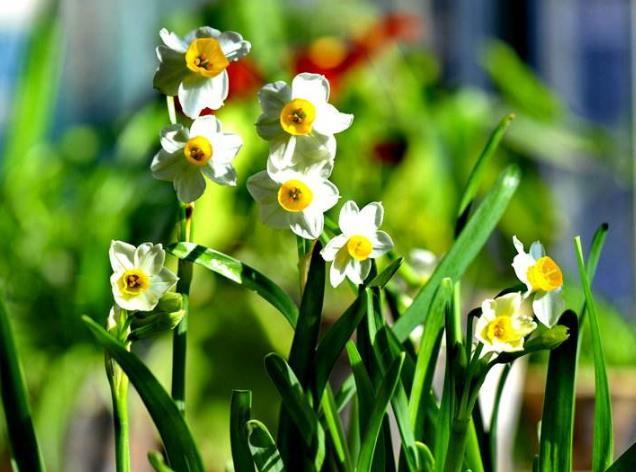
Other common names:daffodil 'Nessa'
Family:Amaryllidaceae
Genus:Narcissus are bulbous herbaceous perennials with linear leaves and leafless stems bearing flowers, which may be solitary or in umbels, with 6 spreading perianth segments and a cup or trumpet-shaped corona
Horticultural Group:Jonquilla and Apodanthus daffodils have very narrow cylindrical leaves and stems with up to 5, usually fragrant, flowers per stem, with spreading perianth segments and a small cup
Details:'Nessa' is a Jonquilla daffodil producing 1-3, strongly scented flowers on each stem in mid-spring. Each 6cm flower comprises yellow, overlapping outer petals surrounding a deeply-ribbed and lightly-frilled, bowl-shaped, orange corona
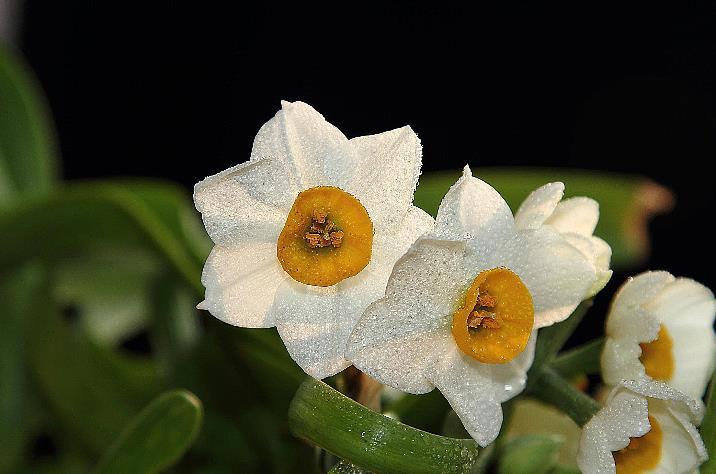
How to grow
Cultivation Plant at one and a half to two times its own depth in autumn. Will tolerate most soils but prefers moderately fertile, well-drained soil that is constantly moist during the growing season. See daffodil cultivation for further advice
Propagation Propagate by removing offsets as the leaves fade in early summer
Suggested planting locations and garden types Flower borders and beds Cut Flowers Low Maintenance City & Courtyard Gardens Cottage & Informal Garden Patio & Container Plants Wildflower meadow

How to care
PruningDeadhead after flowering and allow the leaves to die down naturally
Pests Susceptible to slugs, narcissus bulb fly, narcissus eelworm, and bulb scale mite
Diseases May be affected by narcissus basal rot, narcissus leaf scorch or daffodil viruses

Other common names:daffodil 'Nessa'
Family:Amaryllidaceae
Genus:Narcissus are bulbous herbaceous perennials with linear leaves and leafless stems bearing flowers, which may be solitary or in umbels, with 6 spreading perianth segments and a cup or trumpet-shaped corona
Horticultural Group:Jonquilla and Apodanthus daffodils have very narrow cylindrical leaves and stems with up to 5, usually fragrant, flowers per stem, with spreading perianth segments and a small cup
Details:'Nessa' is a Jonquilla daffodil producing 1-3, strongly scented flowers on each stem in mid-spring. Each 6cm flower comprises yellow, overlapping outer petals surrounding a deeply-ribbed and lightly-frilled, bowl-shaped, orange corona

How to grow
Cultivation Plant at one and a half to two times its own depth in autumn. Will tolerate most soils but prefers moderately fertile, well-drained soil that is constantly moist during the growing season. See daffodil cultivation for further advice
Propagation Propagate by removing offsets as the leaves fade in early summer
Suggested planting locations and garden types Flower borders and beds Cut Flowers Low Maintenance City & Courtyard Gardens Cottage & Informal Garden Patio & Container Plants Wildflower meadow

How to care
PruningDeadhead after flowering and allow the leaves to die down naturally
Pests Susceptible to slugs, narcissus bulb fly, narcissus eelworm, and bulb scale mite
Diseases May be affected by narcissus basal rot, narcissus leaf scorch or daffodil viruses
0
0
文章
A🎌王木木💮
2019年11月18日

After entering the winter,the outside world is getting more and more depressed.If you’re a florist,you can raise some flowers and plants at home,let the space that belongs to you be full of spring.What flowers and plants are suitable for raising in winter?Today we introduce hyacinth.
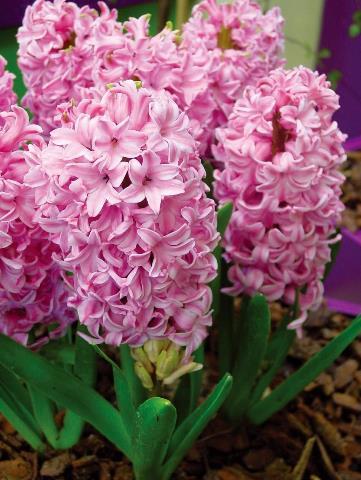
Other common names:hyacinth 'Woodstock'
Family:Asparagaceae
Genus:Hyacinthus are bulbous perennial with glossy, broadly strap-shaped leaves and fragrant, bell-shaped flowers with recurved petals, borne in loose or dense racemes in spring
Details:'Woodstock' is a perennial bulb, growing to 30cm tall, with rich green, glossy, upright foliage and spikes of plum-purple, scented flowers on black-purple stems in mid-spring
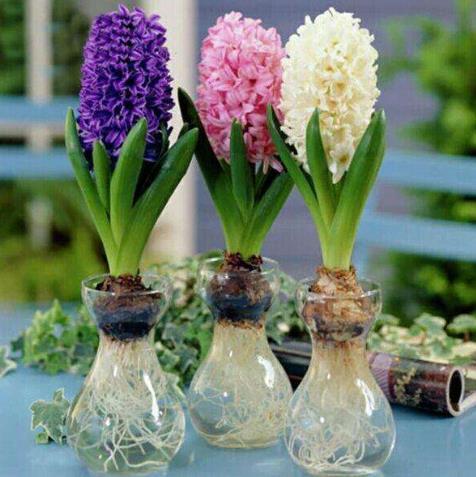
How to grow
Cultivation Plant 10cm deep in autumn in any moderately fertile, humus-rich, well-drained soil. Protect container-grown bulbs from excessive winter wet. See hyacinth cultivation
Propagation Propagate by removing offsets when dormant in summer
Suggested planting locations and garden types Flower borders and beds City & Courtyard Gardens Cottage & Informal Garden Mediterranean Climate Plants Patio & Container Plants

How to care
Pruning No pruning required
Pests Can be damaged by slugs
Diseases Generally disease free

Other common names:hyacinth 'Woodstock'
Family:Asparagaceae
Genus:Hyacinthus are bulbous perennial with glossy, broadly strap-shaped leaves and fragrant, bell-shaped flowers with recurved petals, borne in loose or dense racemes in spring
Details:'Woodstock' is a perennial bulb, growing to 30cm tall, with rich green, glossy, upright foliage and spikes of plum-purple, scented flowers on black-purple stems in mid-spring

How to grow
Cultivation Plant 10cm deep in autumn in any moderately fertile, humus-rich, well-drained soil. Protect container-grown bulbs from excessive winter wet. See hyacinth cultivation
Propagation Propagate by removing offsets when dormant in summer
Suggested planting locations and garden types Flower borders and beds City & Courtyard Gardens Cottage & Informal Garden Mediterranean Climate Plants Patio & Container Plants

How to care
Pruning No pruning required
Pests Can be damaged by slugs
Diseases Generally disease free
0
0
文章
A🎌王木木💮
2019年11月11日

Today is November eleventh--Singles Day .Singles Day is a shopping festival in China.If you’re going to confess on Singles Day,the first choice for sending flowers must be roses,but we’re not talking about roses today.Today we talk about the lucky flowers of November 11th--Camellia.
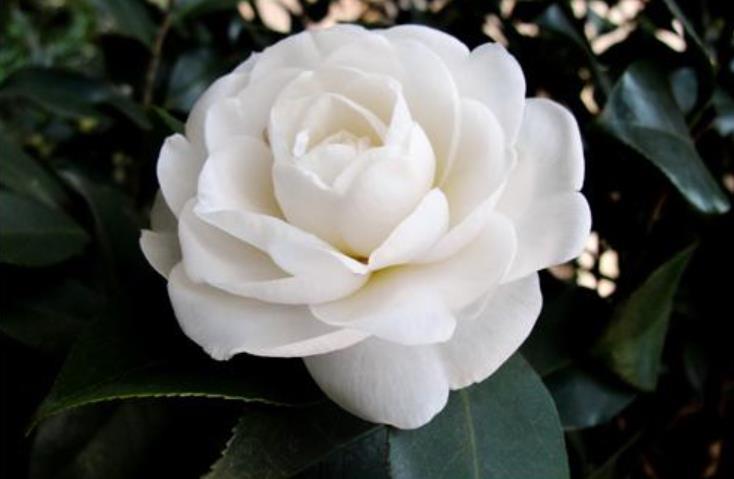
Other common names:camellia 'Quintessence'
Family:Theaceae
Genus:Camellia are evergreen shrubs with simple, ovate, glossy, leathery leaves and showy flowers with solitary or clustered flowers early in the year
Details:Quintessence' is a compact, spreading, evergreen shrub to around 1m tall with glossy, oval, dark green leaves. Musk-scented, small, white, semi-double flowers flushed with pink are borne from late winter to early spring
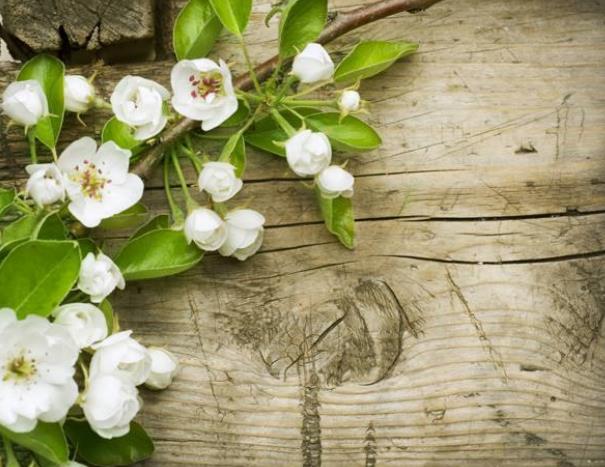
How to grow
Cultivation Suitable for woodland and acidic soils. Position in a site sheltered from cold, dry winds and early morning sun as buds and flowers may be damaged by cold winds and late frosts see camellia cultivation
Propagation Propagate by semi-hardwood cuttings
Suggested planting locations and garden types Flower borders and beds Ground Cover Low Maintenance City & Courtyard Gardens Cottage & Informal Garden Patio & Container Plants
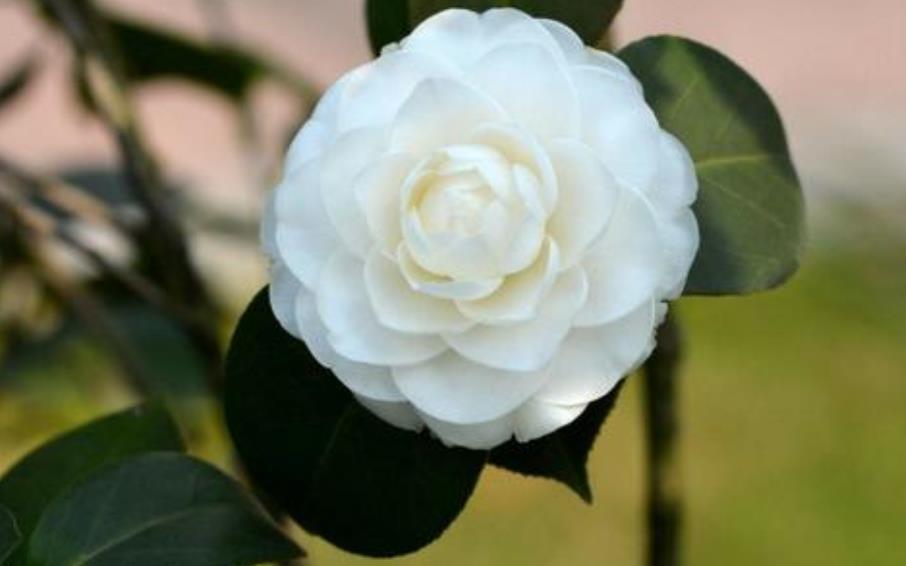
How to care
PruningPruning group 8
Pests May be attacked by aphids, scale insects and vine weevil
Diseases May be affected by honey fungus, phytophthora root rot, camellia gall, camellia leaf blight, camellia yellow mottle virus and flowers may be infected by camellia petal blight

Other common names:camellia 'Quintessence'
Family:Theaceae
Genus:Camellia are evergreen shrubs with simple, ovate, glossy, leathery leaves and showy flowers with solitary or clustered flowers early in the year
Details:Quintessence' is a compact, spreading, evergreen shrub to around 1m tall with glossy, oval, dark green leaves. Musk-scented, small, white, semi-double flowers flushed with pink are borne from late winter to early spring

How to grow
Cultivation Suitable for woodland and acidic soils. Position in a site sheltered from cold, dry winds and early morning sun as buds and flowers may be damaged by cold winds and late frosts see camellia cultivation
Propagation Propagate by semi-hardwood cuttings
Suggested planting locations and garden types Flower borders and beds Ground Cover Low Maintenance City & Courtyard Gardens Cottage & Informal Garden Patio & Container Plants

How to care
PruningPruning group 8
Pests May be attacked by aphids, scale insects and vine weevil
Diseases May be affected by honey fungus, phytophthora root rot, camellia gall, camellia leaf blight, camellia yellow mottle virus and flowers may be infected by camellia petal blight
1
0
文章
A🎌王木木💮
2019年10月28日

Every month has its own lucky flower,The lucky flower of October is the Cosmos bipinnata .Bright green fernlike foliage is the perfect complement to the daisylike flowers of cosmos, which come in shades of white, pink, yellow, or orange.
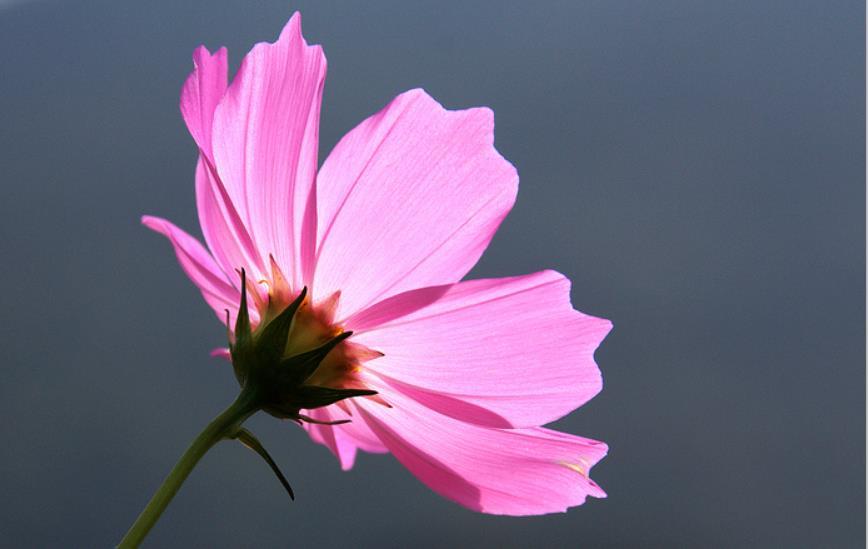
This cottage-garden favorite is a magnet for pollinators and easily grown from seed sown directly in the garden. Plant petite varieties, such as ‘Little Ladybirds’, in containers for a pretty splash of color on the patio. Because cosmos is so easy to grow, it is a fun choice for a children’s garden. Today we will talk about theCosmos sulphureus.
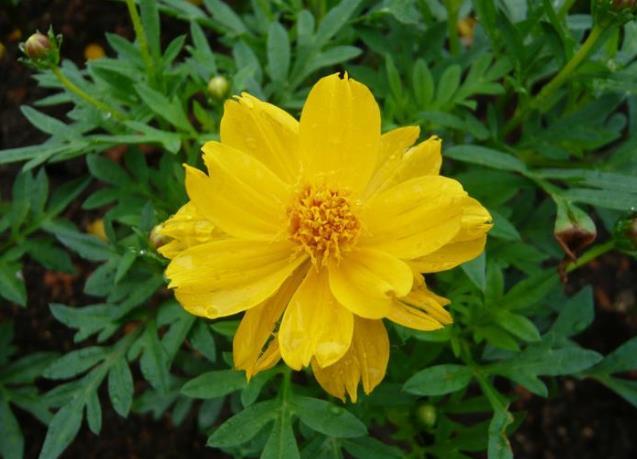
Other common names: yellow cosmos 'Tango'
Family:Asteraceae
Genus:Cosmos can be annuals or perennials with simple or pinnately divided leaves and large, long-stalked daisy-like flowers in summer
Details:'Tango' is an erect, half-hardy annual, to 1.2m tall, with finely-divided mid-green leaves and semi-double flowers in shades of orange, with yellow centres, from summer into autumn
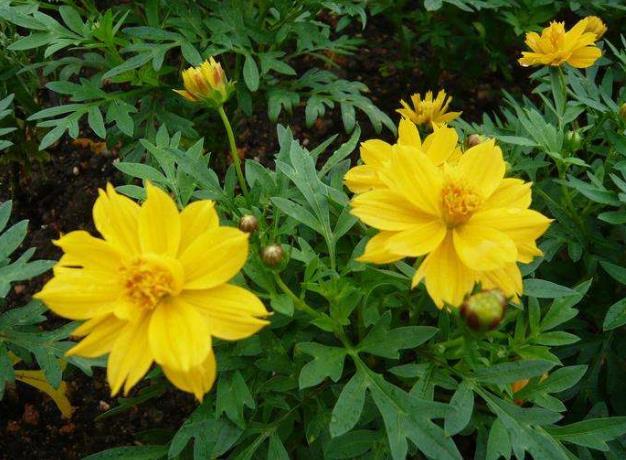
How to grow
Cultivation Grow in moderately fertile, moist but well-drained soil in full sun
PropagationPropagate by seed in mid spring
Suggested planting locations and garden types Cut Flowers Flower borders and beds Cottage & Informal Garden
How to care
PruningDeadheading should be carried out regularly to prolong flowering
PestsAphids and slugs may be a nuisance
Diseases May be affected by grey moulds

This cottage-garden favorite is a magnet for pollinators and easily grown from seed sown directly in the garden. Plant petite varieties, such as ‘Little Ladybirds’, in containers for a pretty splash of color on the patio. Because cosmos is so easy to grow, it is a fun choice for a children’s garden. Today we will talk about theCosmos sulphureus.

Other common names: yellow cosmos 'Tango'
Family:Asteraceae
Genus:Cosmos can be annuals or perennials with simple or pinnately divided leaves and large, long-stalked daisy-like flowers in summer
Details:'Tango' is an erect, half-hardy annual, to 1.2m tall, with finely-divided mid-green leaves and semi-double flowers in shades of orange, with yellow centres, from summer into autumn

How to grow
Cultivation Grow in moderately fertile, moist but well-drained soil in full sun
PropagationPropagate by seed in mid spring
Suggested planting locations and garden types Cut Flowers Flower borders and beds Cottage & Informal Garden
How to care
PruningDeadheading should be carried out regularly to prolong flowering
PestsAphids and slugs may be a nuisance
Diseases May be affected by grey moulds
2
0
文章
绿手指客服
2019年10月28日

Just when you think winter is never going end, the cheery blue and yellow flowers of Iris reticulata ‘Harmony’ burst into bloom. This flowers from this easy-care bulb may be short, but they're big on bold color, especially when planted in large groupings in a rock or woodland garden. Like other bulbs, Iris reticulata ‘Harmony’ requires full sun (at least six hours a day) and well-drained soil.

Plant the spring-blooming bulbs in autumn, placing them 4 inches deep in the soil. Over time, Iris reticulata ‘Harmony’ will spread, slowly carpeting your garden with color. After the flowers fade, leave the foliage alone until it dries and disappears on its own.

How to grow
Cultivation Grow in well-drained, fertile, neutral to slightly acid loam in full sun
Propagation Propagate by division of rhizomes from midsummer to early autumn
Suggested planting locations and garden types Flower borders and beds Wall-side Borders City & Courtyard Gardens Coastal Cottage & Informal Garden
How to care
Pruning Remove any dying foliage in autumn, old flower stems can be cut down after flowering
Pests May be attacked by slugs, snails and thrips
Diseases May be subject to iris rhizome rot, a leaf spot and a virus

Plant the spring-blooming bulbs in autumn, placing them 4 inches deep in the soil. Over time, Iris reticulata ‘Harmony’ will spread, slowly carpeting your garden with color. After the flowers fade, leave the foliage alone until it dries and disappears on its own.

How to grow
Cultivation Grow in well-drained, fertile, neutral to slightly acid loam in full sun
Propagation Propagate by division of rhizomes from midsummer to early autumn
Suggested planting locations and garden types Flower borders and beds Wall-side Borders City & Courtyard Gardens Coastal Cottage & Informal Garden
How to care
Pruning Remove any dying foliage in autumn, old flower stems can be cut down after flowering
Pests May be attacked by slugs, snails and thrips
Diseases May be subject to iris rhizome rot, a leaf spot and a virus
0
0



